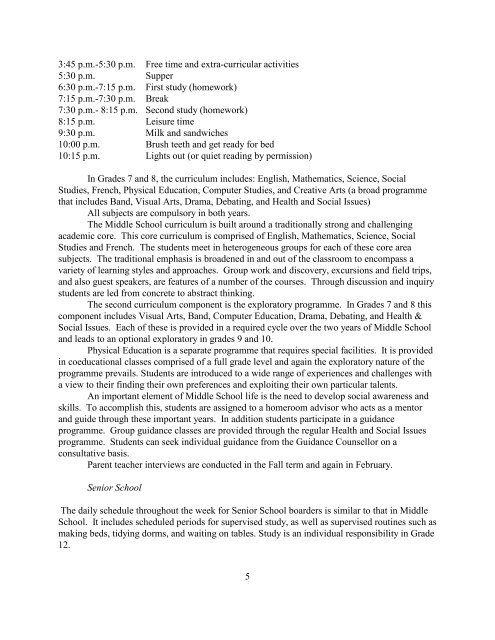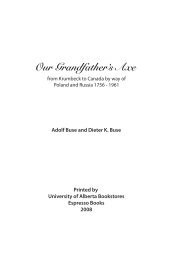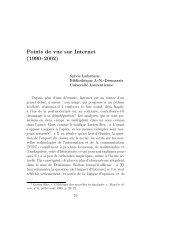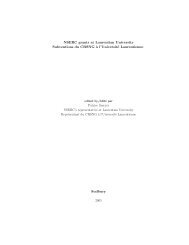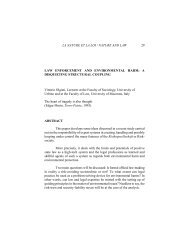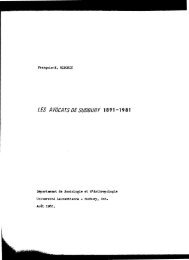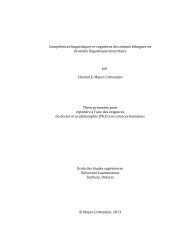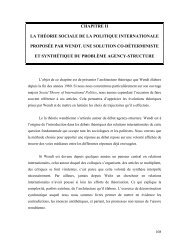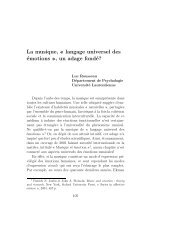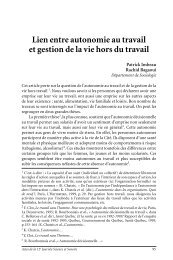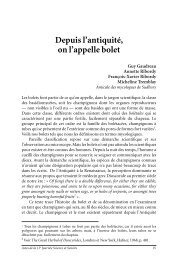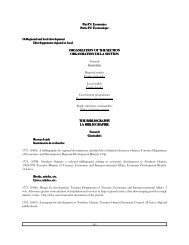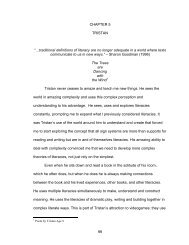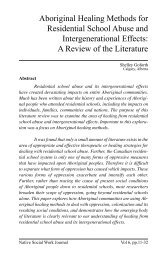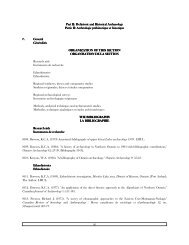1 Secondary Education in Manitoba In 1994, Manitoba Education ...
1 Secondary Education in Manitoba In 1994, Manitoba Education ...
1 Secondary Education in Manitoba In 1994, Manitoba Education ...
Create successful ePaper yourself
Turn your PDF publications into a flip-book with our unique Google optimized e-Paper software.
3:45 p.m.-5:30 p.m. Free time and extra-curricular activities5:30 p.m. Supper6:30 p.m.-7:15 p.m. First study (homework)7:15 p.m.-7:30 p.m. Break7:30 p.m.- 8:15 p.m. Second study (homework)8:15 p.m. Leisure time9:30 p.m. Milk and sandwiches10:00 p.m. Brush teeth and get ready for bed10:15 p.m. Lights out (or quiet read<strong>in</strong>g by permission)<strong>In</strong> Grades 7 and 8, the curriculum <strong>in</strong>cludes: English, Mathematics, Science, SocialStudies, French, Physical <strong>Education</strong>, Computer Studies, and Creative Arts (a broad programmethat <strong>in</strong>cludes Band, Visual Arts, Drama, Debat<strong>in</strong>g, and Health and Social Issues)All subjects are compulsory <strong>in</strong> both years.The Middle School curriculum is built around a traditionally strong and challeng<strong>in</strong>gacademic core. This core curriculum is comprised of English, Mathematics, Science, SocialStudies and French. The students meet <strong>in</strong> heterogeneous groups for each of these core areasubjects. The traditional emphasis is broadened <strong>in</strong> and out of the classroom to encompass avariety of learn<strong>in</strong>g styles and approaches. Group work and discovery, excursions and field trips,and also guest speakers, are features of a number of the courses. Through discussion and <strong>in</strong>quirystudents are led from concrete to abstract th<strong>in</strong>k<strong>in</strong>g.The second curriculum component is the exploratory programme. <strong>In</strong> Grades 7 and 8 thiscomponent <strong>in</strong>cludes Visual Arts, Band, Computer <strong>Education</strong>, Drama, Debat<strong>in</strong>g, and Health &Social Issues. Each of these is provided <strong>in</strong> a required cycle over the two years of Middle Schooland leads to an optional exploratory <strong>in</strong> grades 9 and 10.Physical <strong>Education</strong> is a separate programme that requires special facilities. It is provided<strong>in</strong> coeducational classes comprised of a full grade level and aga<strong>in</strong> the exploratory nature of theprogramme prevails. Students are <strong>in</strong>troduced to a wide range of experiences and challenges witha view to their f<strong>in</strong>d<strong>in</strong>g their own preferences and exploit<strong>in</strong>g their own particular talents.An important element of Middle School life is the need to develop social awareness andskills. To accomplish this, students are assigned to a homeroom advisor who acts as a mentorand guide through these important years. <strong>In</strong> addition students participate <strong>in</strong> a guidanceprogramme. Group guidance classes are provided through the regular Health and Social Issuesprogramme. Students can seek <strong>in</strong>dividual guidance from the Guidance Counsellor on aconsultative basis.Parent teacher <strong>in</strong>terviews are conducted <strong>in</strong> the Fall term and aga<strong>in</strong> <strong>in</strong> February.Senior SchoolThe daily schedule throughout the week for Senior School boarders is similar to that <strong>in</strong> MiddleSchool. It <strong>in</strong>cludes scheduled periods for supervised study, as well as supervised rout<strong>in</strong>es such asmak<strong>in</strong>g beds, tidy<strong>in</strong>g dorms, and wait<strong>in</strong>g on tables. Study is an <strong>in</strong>dividual responsibility <strong>in</strong> Grade12.5


